It hasn’t even been a decade since the first Amazon Echo was released, but this Alexa-powered smart speaker line has become popular in homes around the world. As Amazon continues to refine and refocus the Echo, we’re taking a look at the history of the device and how things have changed over the years. Let’s take a trip back in time to see how this smart device has evolved.
The standard Amazon Echo

This Echo is the standard smart speaker first released by Amazon, the flagship model that would define all others and introduce Alexa to the world. It’s also the model that has gone through the most changes.
The first Echo was released in 2014 to select Amazon members, with the company rolling it out to general consumers the following year. According to reports, when Jeff Bezos learned that the key to voice assistants was getting latency down to a more conversational level, he ordered the Alexa team to reduce latency to one second — something that had never been done with voice assistants at that time (the team’s goal had been getting latency to an all-time low of two seconds). Once they reached that goal, the first Echo was ready for the market.
1st-gen: This model sported a bare, cylindrical appearance with the indicator light on top and the speakers on the bottom. It included a seven-piece microphone set to pick up voice commands, Bluetooth and Wi-Fi capabilities, and a 360-degree speaker setup.
2nd-gen: The second-generation Echo, released in 2016, exchanged the bare design for a fabric covering (and more color options), as well as a shorter, thicker cylinder. The 0.6-inch tweeter and 2.5-inch subwoofer offered improved audio.
3rd-gen: In 2019, Amazon introduced the 3rd generation of the Echo, which softened the design with a more rounded profile and again improved the speakers and technology.
4th-gen: Fast on the heels of the 3rd–gen, the Echo 4th-gen was released in 2020 and featured a radically different design. Instead of a fabric-covered cylinder, the Echo was now an orb with the indicator ring at the bottom. All its smart features remained intact, and the company added Zigbee compatibility.
Amazon Echo Plus
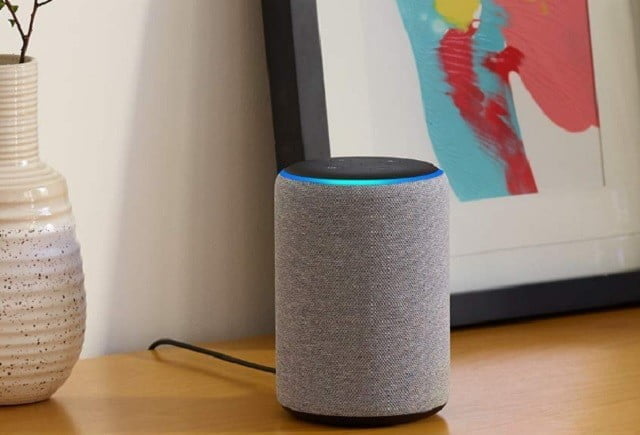
The goal of the Echo Plus was to offer a premium version of the Echo with some extra capabilities. Amazon appears to have slowly merged the Echo and Echo Plus, making this particular line a short-lived one.
1st-gen: The company released the first Echo Plus in 2017. Its design was similar to the original Echo (they are difficult to tell apart at a glance). For this version, the primary benefit was the addition of the Zigbee smart home communication protocol. The Echo Plus also sported a line out to send audio to another speaker and improved drivers for better sound.
2nd-gen: In 2018, the Echo Plus arrived and had the same redesign as the Echo third-gen model. However, Amazon decided that Zigbee and improved drivers were something it could incorporate into the primary Echo line, and the Echo Plus was dropped from circulation.
Amazon Echo Dot
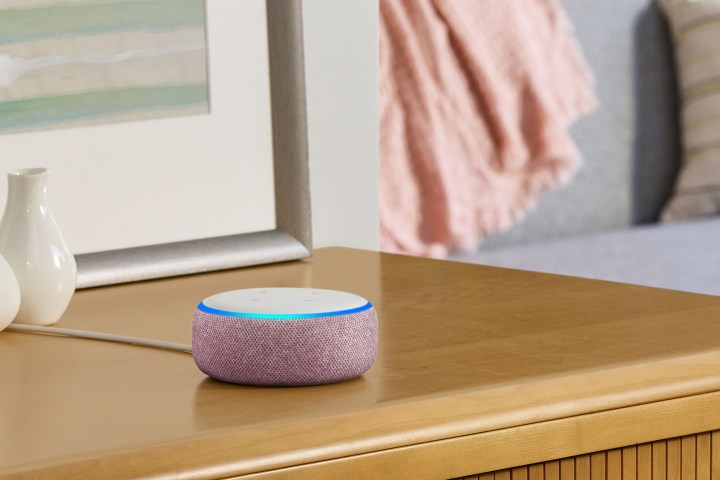
Amazon felt that some users were looking for a smart speaker that was smaller and more portable than the Echo, something that could be used up close. Enter the Echo Dot, which has all the same Alexa features as the Echo but inside a much smaller, puck-like speaker.
1st-gen: The first generation of the Echo Dot was released in spring 2016 and was specifically designed for smaller spaces than the original Echo.
2nd-gen: In fall 2016, Amazon followed up the Echo Dot with the 2nd-generation model. This version featured the ability for Echo Dots to work together for shared sound, and it received a price drop.
3rd-gen: In 2018, the third-generation Echo Dot hit the market. Like other Echos, it now had a fabric cover and a more rounded design, but that’s the extent of the changes. Amazon also started selling Echo Dots made specifically for kids around this time.
4th-gen: In 2020, a new Echo Dot was released to completely revolutionize the line. The new model was a smaller version of the orb-like 4th-gen Echo and cost half the price.
5th-gen: Amazon updated the Echo Dot (and the Echo Dot with a Clock) in 2022. The orb-like design remained the same, but a whole lot changed under the surface. It now has a new speaker design with deeper bass, additional sensors to measure things like nearby temperatures, and Eero technology to connect with and support Eero mesh Wi-Fi networks.
Amazon Echo Show

Smart speakers eventually evolved into smart displays — which are essentially smart speakers with a touchscreen that can display information, video chats, and videos or shows, as well as offer more direct control, among other features. Amazon was one of the first companies to release a smart display in the form of the Echo Show, another line that has changed dramatically over the years.
1st-gen: In 2017, Amazon released the 1st-gen Echo Show featuring a slanted, panel-like design with a small 7-inch touchscreen and an outward-facing speaker on its base.
2nd-gen: Available in 2018, the second-gen Echo Show completely redesigned the smart display. The new model sported a more compact design (a bit like a pyramid lying on its side), with upgraded speakers hidden in the fabric angles behind the screen, making the display significantly larger at 10 inches.
Echo Show 10 3rd-gen: Renamed the Echo Show 10, the third generation of the smart display again entirely reinvented the design in 2020. The 10-inch display now sat on top of a rounded speaker base and had the ability to rotate to follow people.
Echo Show 5 1st-gen: Amazon also diversified the Echo Show line into a variety of different sizes. In 2019, the first Echo Show 5 was a smaller version featuring a 5.5-inch display designed for smaller spaces. It was particularly friendly as a smart alarm clock.
Echo Show 5 2nd-gen: The 2021 version of the Echo Show 5 improved the quality of the camera and added a couple of other features but remained relatively the same as its predecessor.
Echo Show 8 1st-gen: This 2019 model was similar to the 2nd-gen Echo Show but had a slightly smaller 8-inch screen and a more compact design featuring a battery base for wireless operation.
Echo Show 8 2nd-gen: The 2nd-generation model was released in 2021 and featured an upgraded 13-megapixel camera.
Echo Show 15: This new version of the Show was released in 2021 with a new 15.6-inch design that’s made to be mounted onto a wall. Other features, including the camera, Alexa, and privacy controls, were all included, but this version made the photo frame feature a focus.
Amazon Echo Studio
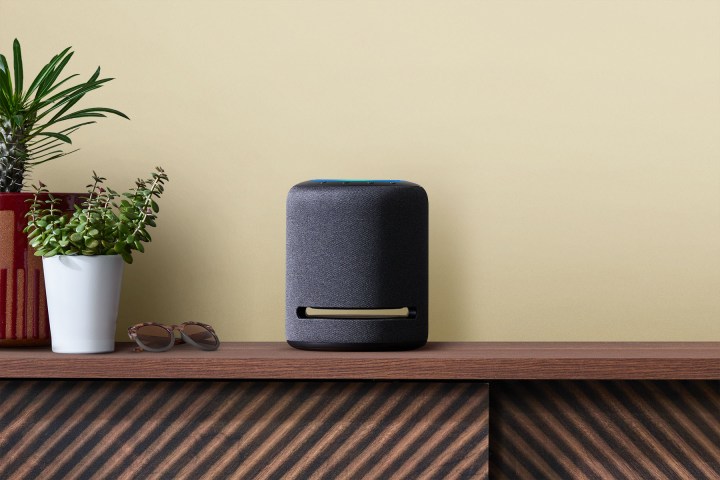
While all Echos can connect to compatible sound systems, Amazon wanted an Echo that could really take center stage and offer great audio in entertainment systems. Enter the Echo Studio, a much larger model featuring five speakers plus support for Dolby Atmos and Amazon’s 3D Audio. The model also had sensors that could determine a room’s acoustics and make small adjustments in response.
While Amazon didn’t update the Echo Studio with a new model in 2022, it did add a firmware update that gave it additional spatial audio capabilities with the right Amazon music subscription.
Amazon Echo Auto
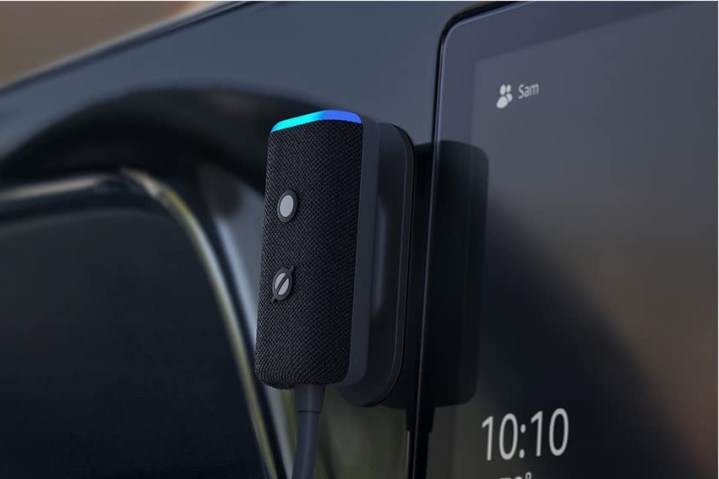
Amazon released the first Echo Auto in 2019, a device designed to work with your car’s system and your phone to give you Alexa capabilities in your car without having to open up the Alexa app. The goal was to easily stream your Alexa music services in your car and turn your phone into a car display if you didn’t have one. There were some compatibility issues with the first model, but in 2022, Amazon released a second version, both smaller and easier to mount, along with added roadside assistance capabilities.
Amazon Echo Spot
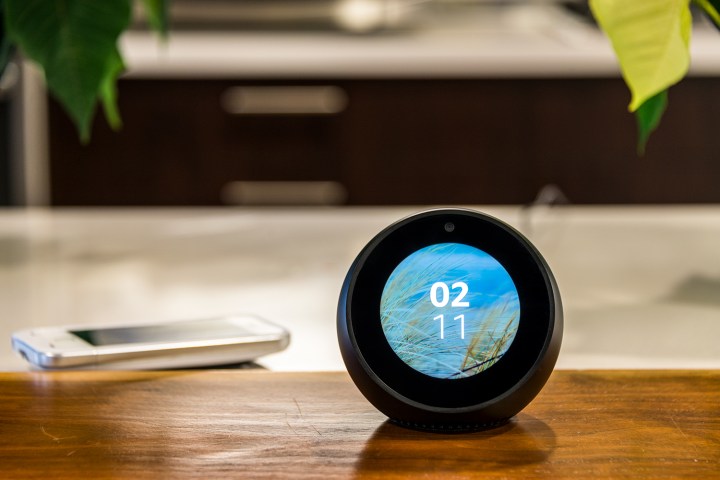
In 2017, Amazon released an interesting combination of the Dot and Show, called the Echo Spot. The model had a round screen and was designed primarily to be an alarm clock. Amazon quickly ditched this idea to focus on variants of the Echo Show line.
Amazon Echo Flex

The Echo Flex was a tiny plug-in speaker released in 2019. Amazon designed the unit to plug into an outlet and provide basic Alexa functionality. However, the tiny speaker wasn’t good enough to provide serious audio and was eventually discontinued.
Amazon Echo Input

In 2020, Amazon released this small device that’s not really an Echo at all. The Input was basically hardware housing Alexa that could be physically connected to another compatible speaker to give it some Alexa capabilities. The model is currently discontinued.
Amazon Echo Look

The Amazon Echo Look was an odd little device that appeared on the scene in 2017. Equipped with a camera but no display, the Look was designed to be a fashion assistant. It had an LED array for lighting and could take pictures of you and your clothing of choice. The Look could then make recommendations for clothes and accessories. The idea did not take off, and the Look was discontinued.
Amazon Astro

While Echo isn’t in the name, this little Astro robot had most of the features found in Echo devices, including Alexa capabilities, a smart display, and so on. It just happened to move around as well. The bot was announced in 2021, and it uses intelligent motion and can carry items, patrol a home, and offer all of Alexa’s features, including a video camera for chatting. In 2022, Amazon announced an Astro update that allowed the bot to serve as a guard for small businesses, added pet detection, and more.
That’s the evolution of the Echo. Which is your favorite model?
Editors' Recommendations
- How to save Ring Doorbell video without a subscription
- How to use all Amazon Alexa alarm clock features
- Best Amazon Echo deals: Save on Pop, Show, Dot, and Studio
- The 6 best Echo Hub tips and tricks
- How to use the Google Home app on a computer




